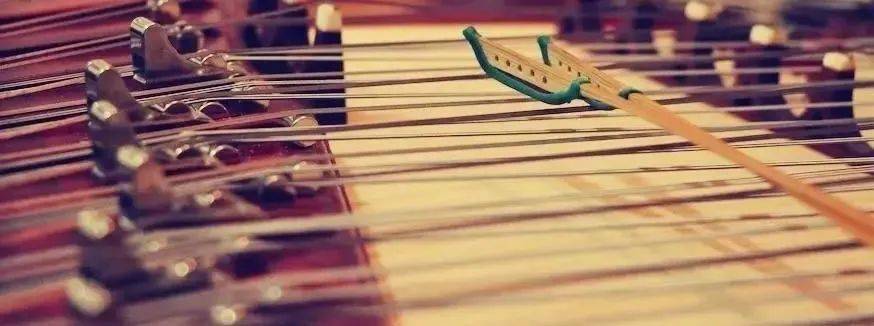Introduction to the types of Chinese dulcimer
Chinese dulcimer includes traditional dulcimer (also known as fan-faced qin, butterfly qin, playing qin, etc.) tempered dulcimer, mutated dulcimer, 401-type dulcimer, 501-type dulcimer electric dulcimer, Guangzhou twelve well-tempered dulcimer, Shanghai Bayi-type well-tempered dulcimer Dulcimer, Dulcimer, Dulcimer, Type 402 Dulcimer, Dulcimer, Bass Dulcimer, etc. Now the most widely used is the 402 dulcimer.

What is Lulu-style dulcimer?
This kind of dulcimer was jointly developed by Zheng Baoheng and Zhang Zirui in the early 1950s. The key points of its reform are: 1. Enlarging the range and solving the problem of transposition and arbitrary performance of temporary change of semitones. 2. Each bar of phonemic arrangement is a major second straight line, which requires a sequence of semitone bends and connections, so the arrangement of each scale is the same, which is convenient for playing the same tune with the same method. ③ Enlarged the volume And increase the sound thickness.④Change the original dead mountain pass that affects the temperament to the active mountain pass, so that each mountain pass can maintain the corresponding parallelism with the code bar, thus ensuring the purity of the temperament.⑤Improve the tension strength of the strings , so that there is a scientific proportional relationship between the string length, the string number (thickness of the string) and the pitch. ⑥ A pedal damper is added to control the reverberation of the dulcimer to a certain extent. The legs and the body of the piano are integrated, so it is also called a table-top dulcimer. Its volume and weight are larger than other dulcimers.
What is a dulcimer dulcimer?
This kind of dulcimer was developed by Yang Jingming in the late 1950s, and the key points of its reform are: 1. Enlarging the range of sound, and partially solving the problem of transposition and playing changing sounds. The vocal range is G-e3, including part of the chromatic scale nearly four octaves. ②The four code bars are juxtaposed horizontally. ③On the basis of the active mountain pass of the dulcimer, a pitch change slot is added to some of the mountain pass. When you need to change the pitch during performance, hold the handle of the pitch change slot with your hand and push and pull it to the right or left to change the pitch of the strings. To achieve the purpose of modulation, because the pitch of some strings is variable, it is called a dulcimer. ④ Compared with the traditional dulcimer, the volume and sound thickness are increased. ⑤A folding piano frame is attached.
What is 401 Dulcimer?
It was successfully developed on the basis of the voice-changing dulcimer and the Beijing National Musical Instrument Factory. ①A sound-changing slot is creatively added on the roller board, with 12 copper cars and 12 homophones. ② In the case of a large expansion of the phoneme, the parallel arrangement of multiple code bars is adopted, which not only prevents the body from being excessively enlarged and weighted, but also reduces the composition of the vertical octave that is not easy to play. ③ The vocal range is wide, with four octaves and a major second.
What is 501 Dulcimer?
It was developed by Gui Xili and Beijing National Musical Instrument Factory in the 1970s. On the basis of the sound-changing dulcimer, it achieves: 1. Reduce the sound-changing groove, reduce the original ten sound-changing grooves to one, and rely on adding a semitone. To solve the modulation, because it is inconvenient to rely on the pitch-changing groove for modulation. ②It has a larger range than the dulcimer. ③A damper is installed.
What is twelve well-tempered dulcimer?
The twelve well-tempered dulcimer uses the semitones in the sound well-tempered to transpose. There are Lu-style big dulcimer, 401-type dulcimer, 501-type dulcimer, red flag twelve well-tempered dulcimer, etc.
What is Guangzhou twelve well-tempered dulcimer?
It is a five-row dulcimer developed by Chen Zhaohua and the Guangzhou National Musical Instrument Factory in the 1970s on the basis of the big dulcimer and the mutated dulcimer. ①The problem of transposition is completely solved. ②The sound sequence is regular and easy to play. ③ The vocal range is wide, with more than four octaves. ④ There is a special sound area, which provides convenience for glissando and playing up and down slides.
What is Shanghai 81 Well-Tempered Dulcimer?
It was developed by Hong Shengmao and Shanghai National Musical Instrument Factory on the basis of dulcimer and polyphony in the late 1970s. ①The 81-type dulcimer has 13 codes in four rows, and 3 bass codes, with a total of 72 phonemes, which are arranged in four groups of G-a 3, including all semitones and 21 homophones. Because the chromatic tone that was not in the original high-pitched area is supplemented, and the range of sound is expanded, the dulcimer can easily play twelve-tone music. ②The sound-changing groove is cancelled, and the phoneme is fixed and regular. The four-row code is a major second in the vertical direction and a pure fifth in the horizontal direction. The homophones above the second and third rows of codes are called diphthongs, which unify the horizontal arrangement of the scales in the middle and high-pitched areas, and can play twelve keys with one rule, and the performer can also choose to use them according to their needs. For the upright tone, there are three progressive routes when each scale goes to the high-pitched area, which brings convenience to the performer.
What is full-tempo live-code dulcimer?
In the 1970s, Zheng Baoheng and Tianjin National Musical Instrument Factory developed the second-generation dulcimer, which combined the advantages of the Lu-style dulcimer and the mutated dulcimer, and overcame the shortcomings of both. The yard is overhead, and its height is adjustable, so it is called a live yard dulcimer.
 渝公网安备 50010702504639号
渝公网安备 50010702504639号